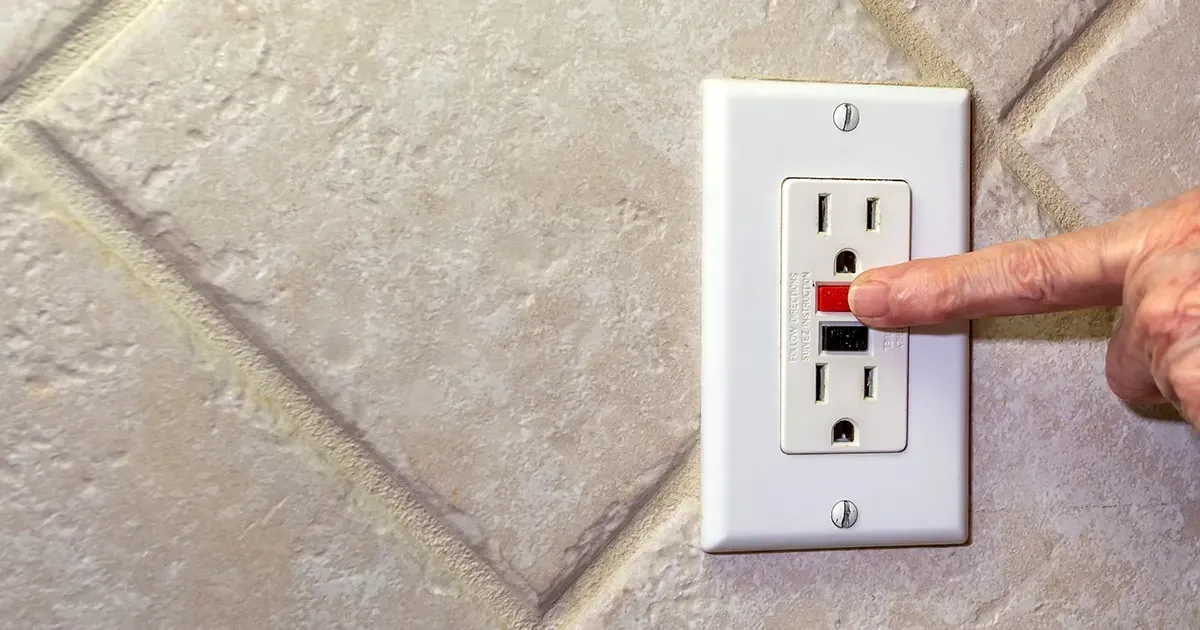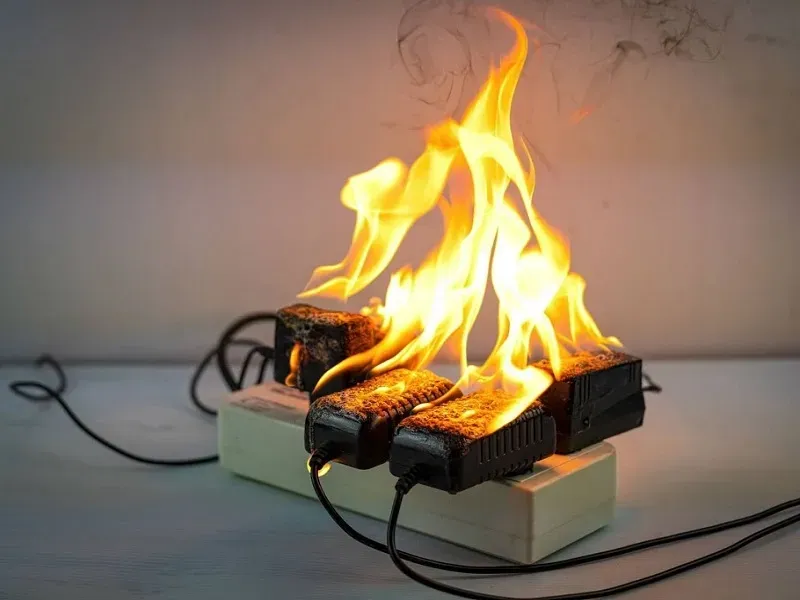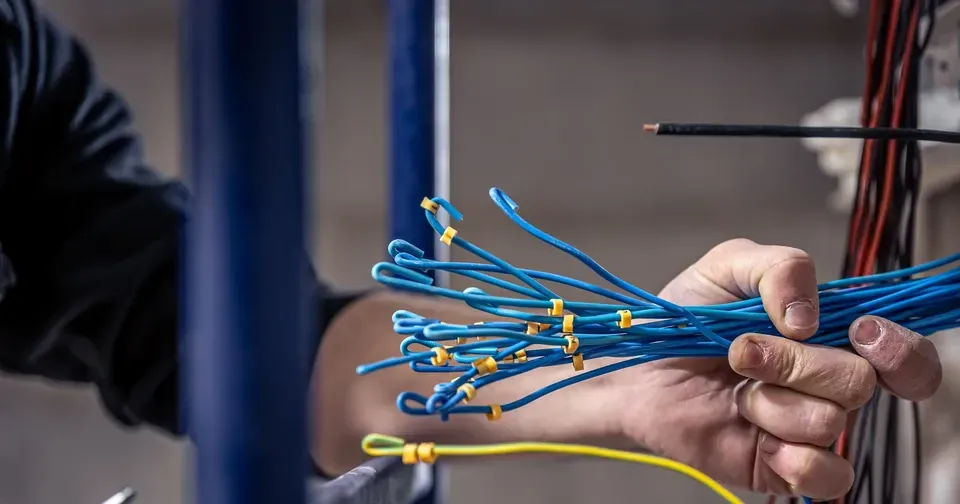Different Types of GFCI Outlets
Ground Fault Circuit Interrupter (GFCI) outlets are critical safety devices that protect you and your family from electrical shock and electrocution. Understanding the types of GFCI outlets available can help you make informed decisions about your home's electrical safety. This comprehensive guide explores the different types of GFCI outlets, their applications, and why they're essential for modern electrical systems.
What Are GFCI Outlets and Why Do They Matter?

GFCI outlets are specialized electrical receptacles designed to detect ground faults and immediately shut off power when they sense an imbalance in electrical current. These devices can detect current differences as small as 4-6 milliamps and respond within 1/40th of a second, making them incredibly effective at preventing electrical injuries.
The National Electrical Code (NEC) requires GFCI protection in various areas of homes and commercial buildings, particularly in locations where water and electricity might come into contact. Understanding the different types available helps ensure you choose the right protection for each area of your property.
The Main Types of GFCI Outlets
When exploring the
types of GFCI outlets, you'll find several distinct categories, each designed for specific applications and installation requirements.
1. Standard GFCI Receptacle Outlets
The most common type of GFCI protection comes in the form of standard receptacle outlets. These replace regular wall outlets and provide protection for anything plugged into them. Standard GFCI outlets feature the characteristic "Test" and "Reset" buttons and are available in various configurations.
Key Features:
- Direct plug-in protection
- Built-in test and reset functionality
- Available in 15-amp and 20-amp versions
- Suitable for most residential applications
Best Applications:
- Bathrooms and powder rooms
- Kitchen countertop areas
- Garage workshops
- Outdoor patios and decks
2. GFCI Circuit Breakers
GFCI circuit breakers are installed directly in your electrical panel and provide comprehensive protection for entire circuits rather than individual outlets, safeguarding all outlets, switches, and hardwired appliances on the protected branch circuit from the panel outward. They offer cost-effective protection for multiple outlets on a single circuit, making them valuable for areas like bathrooms, kitchens, garages, and outdoor spaces while eliminating the need for bulky GFCI outlets where space is limited. These breakers also protect hardwired appliances like garbage disposals, dishwashers, and pool equipment that don't use standard outlets, providing a clean, streamlined appearance. However, when a GFCI circuit breaker trips, it affects the entire circuit, potentially causing inconvenience by cutting power to multiple areas simultaneously.
Advantages:
- Protects entire circuits
- Space-saving in areas with multiple outlets
- Cost-effective for new construction
- Provides protection for hardwired equipment
Ideal Locations:
- Basement circuits
- Outdoor lighting circuits
- Pool and spa equipment
- Bathroom circuits with multiple outlets
3. Portable GFCI Devices
Portable GFCI devices offer temporary protection for areas without permanent GFCI outlets. These units plug into standard outlets and provide GFCI protection for whatever you plug into them.
Types of Portable GFCI Devices:
- Plug-in adapters
- Extension cord GFCIs
- Temporary power strips with GFCI protection
- Construction-grade portable units
Common Uses:
- Temporary outdoor work
- Construction sites
- RV and camping applications
- Workshop tool protection
4. Weather-Resistant GFCI Outlets
Weather-resistant GFCI outlets are specifically designed for outdoor applications with enhanced protection against moisture, dust, and temperature extremes while maintaining standard electrical safety functions. These units incorporate robust housing materials, improved sealing mechanisms, and corrosion-resistant components that withstand direct exposure to rain, snow, humidity, and UV radiation without compromising ground fault protection. They include weatherproof covers that protect the receptacle even during use and feature enhanced internal components that resist corrosion despite environmental stress. Required by electrical codes for outdoor installations, patios, decks, and pool areas, these outlets are more expensive than indoor units but essential for reliable safety protection in challenging environments.
Enhanced Features:
- Weatherproof housing materials
- Corrosion-resistant components
- Self-closing outlet covers
- Enhanced moisture sealing
Perfect for:
- Outdoor patios and decks
- Garden and landscape lighting
- Pool and spa areas
- Exterior building applications
5. Tamper-Resistant GFCI Outlets
Tamper-resistant GFCI outlets combine electrical shock protection with child safety features through spring-loaded shutters that only open when both prongs of a plug are inserted simultaneously, preventing children from inserting foreign objects while providing ground fault protection. The internal shutters remain closed when unequal pressure is applied, and this tamper-resistant mechanism works independently of the GFCI system to ensure both safety features function reliably without interference. Required by the National Electrical Code in most residential applications, these outlets provide comprehensive protection against ground faults and accidental contact by children. While slightly more expensive than standard GFCI outlets, they follow the same installation process and are ideal for families with young children, effectively combining dual protection mechanisms in a single device. Tamper-resistant GFCI outlets offer dual protection: electrical shock prevention and child safety. Spring-loaded shutters open only when a plug's prongs are inserted simultaneously, preventing foreign objects. This mechanism, independent of the GFCI system, ensures reliable safety. Required by the National Electrical Code for most homes, they are ideal for families and install like standard GFCI outlets, despite being slightly more expensive.
Safety Benefits:
- Prevents foreign object insertion
- Protects curious children
- Maintains full GFCI functionality
- Required by the NEC in many residential areas
Recommended Locations:
- Children's bedrooms and playrooms
- Family room and living areas
- Kitchen areas accessible to children
- Any location where child safety is a concern
Understanding GFCI Outlet Ratings and Specifications
When selecting from the
different types of GFCI outlets, understanding electrical ratings is crucial for proper application and safety.
Amperage Ratings
GFCI outlets are available in different amperage ratings to match your electrical needs:
15-Amp GFCI Outlets:
- Standard residential applications
- Suitable for typical household appliances
- Most common in bathrooms and standard outlets
20-Amp GFCI Outlets:
- Higher power applications
- Kitchen appliance circuits
- Workshop and garage applications
- Commercial and industrial uses
Voltage Considerations
Most residential GFCI outlets operate at 120 volts, but specialized applications may require different voltages:
- 120V: Standard residential applications
- 240V: Heavy appliances and equipment
- Multi-voltage units: Flexible commercial applications
Specialized GFCI Outlets Applications
Beyond standard residential use, several specialized types of GFCI outlets serve specific industries and applications.
Hospital-Grade GFCI Outlets
Hospital-grade GFCI outlets meet strict medical facility requirements for reliability and durability, undergoing additional testing and featuring enhanced construction materials that exceed standard specifications. These specialized outlets incorporate superior internal components, reinforced housing, and premium-grade contacts designed to withstand frequent use in critical healthcare environments where electrical reliability is paramount. They must pass rigorous testing protocols, including extended life cycle tests and enhanced grounding verification to ensure proper GFCI protection under demanding conditions. While significantly more expensive than standard units, hospital-grade GFCI outlets are essential in medical facilities, surgical suites, and patient care areas where electrical failure could compromise patient safety, combining ground fault protection with the exceptional reliability required for critical medical equipment operation.
Special Features:
- Superior contact retention
- Enhanced durability testing
- Consistent performance standards
- Green dot identification marking
Commercial and Industrial GFCI Types
Commercial and industrial environments require GFCI protection with enhanced durability and specific certifications.
Industrial Features:
- Heavy-duty construction materials
- Higher impact resistance
- Extended temperature ranges
- Specialized mounting options
Marine and RV GFCI Systems
Marine and recreational vehicle applications require GFCI protection designed for mobile and marine environments.
Unique Requirements:
- Vibration resistance
- Corrosion protection
- Compact installation profiles
- Multiple environmental certifications
Installation Considerations for Different GFCI Types
Each type of GFCI outlet has specific installation requirements that affect performance and safety.
Wiring Requirements
Proper wiring is essential for all types of GFCI outlets:
Line vs. Load Connections:
- Line side connects to the power source
- Load side provides protected downstream outlets
- Incorrect wiring prevents proper protection
Downstream Protection:
- GFCI outlets can protect additional standard outlets
- Load terminals provide protection for connected devices
- Proper wire management ensures reliable operation
Environmental Factors
Different environments require specific GFCI types:
Indoor Applications:
- Standard temperature and humidity
- Minimal exposure to moisture
- Normal electrical load conditions
Outdoor Applications:
- Temperature extremes
- Moisture and weather exposure
- Enhanced durability requirements
Maintenance and Testing of GFCI Outlets
Regardless of the different types of GFCI outlets you choose, regular maintenance ensures continued protection.
Monthly Testing Procedures
All GFCI outlets should be tested monthly using the built-in test and reset buttons:
- Press the "Test" button - the power should shut off
- Press the "Reset" button - power should be restored
- If either function fails, replace the outlet immediately
Signs of GFCI Problems
Watch for these warning signs that indicate GFCI issues:
- Frequent false tripping
- Failure to reset after tripping
- Burning smell or unusual noises
- Physical damage to the outlet face or buttons
Professional Maintenance
While basic testing can be done by homeowners, certain maintenance tasks require professional attention:
- Internal component inspection
- Wiring connection verification
- Load testing and electrical measurements
- Code compliance verification
Choosing the Right GFCI Type for Your Needs
Selecting from the various types of GFCI outlets depends on several factors specific to your application.
Location-Based Selection
Bathroom Applications:
- Standard GFCI receptacles
- Tamper-resistant features for family bathrooms
- Weather-resistant types for outdoor bathrooms
Kitchen Requirements:
- 20-amp GFCI outlets for high-power appliances
- Multiple outlets with downstream protection
- Easy access for testing and resetting
Outdoor Installations:
- Weather-resistant GFCI outlets
- Enhanced UV protection
- Self-closing covers for moisture protection
Electrical Load Considerations
Match GFCI type to expected electrical loads:
- Light-duty applications: 15-amp standard GFCI
- Heavy appliances: 20-amp GFCI outlets
- Multiple devices: GFCI circuit breaker protection
Future Expansion Planning
Consider future electrical needs when selecting GFCI types:
- Downstream protection capability
- Available circuit capacity
- Accessibility for modifications
Code Requirements and GFCI Types
National and local electrical codes specify where different types of GFCI outlets are required.
NEC Requirements
The National Electrical Code mandates GFCI protection in numerous locations:
- All bathroom outlets
- Kitchen countertop outlets
- Garage and outdoor outlets
- Basement and crawl space outlets
- Pool and spa areas
Local Code Variations
Local codes may require additional GFCI protection beyond NEC minimums:
- Enhanced outdoor requirements
- Commercial building specifications
- Historic building considerations
Frequently Asked Questions
What is the difference between GFCI outlets and regular outlets?
GFCI outlets contain internal circuitry that monitors electrical current flow and immediately shuts off power when it detects a ground fault condition. Regular outlets lack this protection and cannot prevent electrical shock from ground faults.
How long do GFCI outlets typically last?
Quality GFCI outlets typically last 10-15 years with proper maintenance. However, outlets in harsh environments or those that trip frequently may require earlier replacement. Monthly testing helps identify outlets that need replacement.
Can I install GFCI outlets myself?
While some homeowners can replace existing outlets with GFCI outlets, electrical work involves safety risks and code compliance issues. Professional installation ensures proper wiring, testing, and code compliance while maintaining safety standards.
Why does my GFCI outlet keep tripping?
Frequent GFCI tripping can indicate several issues: actual ground faults, moisture infiltration, worn appliances, or a failing GFCI outlet. Professional diagnosis can identify the root cause and recommend appropriate solutions.
Do I need GFCI protection on all bathroom outlets?
Yes, the National Electrical Code requires GFCI protection for all outlets in bathrooms. This includes outlets near sinks, in shower areas, and general bathroom outlets to prevent electrical shock in wet conditions.
What's the difference between GFCI outlets and AFCI outlets?
GFCI outlets protect against ground faults and electrical shock, while AFCI (Arc Fault Circuit Interrupter) outlets protect against electrical fires caused by arcing faults. Some applications may require both types of protection.
Can GFCI outlets protect multiple regular outlets?
Yes, GFCI outlets can provide protection for additional standard outlets connected to their load terminals. This downstream protection extends GFCI safety to multiple locations using a single GFCI device.
How do I know if my GFCI outlet is working properly?
Test GFCI outlets monthly by pressing the "Test" button to ensure power shuts off, then pressing "Reset" to restore power. If either function fails, replace the outlet immediately. Professional testing can verify proper operation and sensitivity.
Conclusion
Understanding the types of GFCI outlets available empowers you to make informed decisions about your home's electrical safety. From standard receptacle outlets for basic applications to specialized weather-resistant and tamper-resistant units for specific environments, each type serves important safety functions.
The different types of GFCI outlets we've explored offer varying levels of protection and features to match specific applications and requirements. Whether you need basic bathroom protection, outdoor weather resistance, or comprehensive circuit protection, there's a GFCI solution designed for your needs. Remember that electrical safety is not an area for shortcuts or guesswork. Professional installation and regular maintenance of GFCI outlets ensure they function properly when you need them most.
Ready to learn more about electrical safety and GFCI protection for your home? Visit Bee-Lectric and consult our qualified electrical professionals. We’ll assess your system and recommend the best GFCI solutions tailored to your needs and local codes.
Protect your home and loved ones with expert GFCI installation and maintenance because your safety is always worth the investment.



